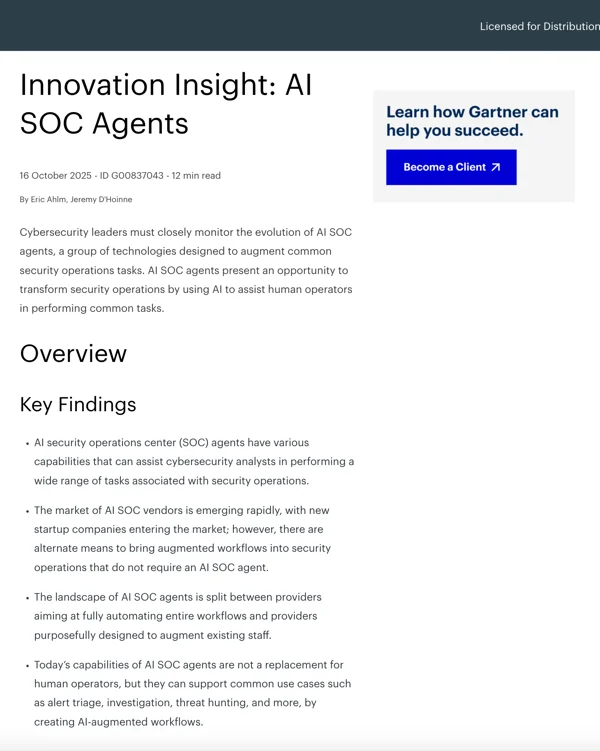
-min.webp)
Security leaders know the risks they do not see can hurt the most. The challenge is not only the volume of alerts but also the difficulty of connecting weak signals scattered across identity, cloud, endpoint, email, and SaaS systems. Even when analysts want to go looking for trouble, the time and effort to collect and correlate the right data makes proactive hunting rare.
An AI SOC platform changes that. By automating evidence gathering, linking related entities, and guiding investigations with context-aware reasoning, it allows analysts to run targeted hunts that would have taken hours or days to execute. The difference is that these hunts start with human intuition; the AI accelerates and expands them.
This post uses real SOC scenarios to show how Prophet Security’s AI SOC platform turns an analyst’s question into a cross-domain investigation, surfacing patterns before they become incidents.
Imagine an analyst reviewing overnight alerts. None meet the threshold for an incident, but one item catches their attention: a finance user who completed several MFA prompts just before dawn. It is not enough for a case, but it sparks a thought: Has anything else odd happened around this account recently?
With most tools, answering that question means querying multiple consoles, normalizing results, and manually stitching timelines together. The friction often kills the hunt before it starts.
{{ebook-cta}}
With Prophet AI, the analyst can:
The hunt is still human-initiated. The AI removes the drudgery of finding, gathering, and correlating the evidence.
User-driven hunting works best when the AI can reach across domains instantly. Prophet AI unifies:
In a traditional SOC, proactive hunting often loses out to alert triage. In a SOC with Prophet AI, hunting is something analysts do in the flow of their day because the barrier to starting is low and the payoff is high. The AI does the tedious parts, leaving humans to decide what to ask, what to pursue, and when to act. Request a demo of Prophet AI today to see it in action.
AI-driven threat hunting is the process of using artificial intelligence to help security analysts investigate potential threats by automating data collection, correlation, and pattern recognition across multiple systems. Analysts still decide when to start a hunt and what questions to pursue, while the AI accelerates the work.
AI can query and normalize data from multiple sources instantly, identify relevant entities, and surface connections that would take humans hours to assemble manually. This reduces the time from forming a hypothesis to getting a clear, cross-domain view.
Effective hunts typically draw from identity logs, cloud and container activity, endpoint telemetry, email security data, SaaS activity logs, and centralized log stores. AI systems combine these feeds to give analysts a unified investigation workspace.
No. AI assists human hunters by handling repetitive and time-consuming steps, such as data gathering and enrichment, so analysts can focus on interpreting evidence, forming hypotheses, and making decisions.
Sometimes. Simple instances of IOC-based searches and simple hypothesis can be automated, but analysts will often prefer to retain control of the hunt flow so they can interpret the results from each question before asking a follow up one.
AI-driven platforms often use contextual reasoning, historical baselines, and threat-informed heuristics to score findings. Explainability features allow analysts to review the exact queries, data sources, and reasoning steps behind each conclusion.
Common metrics include time from hunt initiation to first finding, hunt-to-incident conversion rate, percentage of cross-domain hunts, and analyst hours saved on data gathering.
Get Gartner's guidance on evaluating and adopting AI SOC agents

